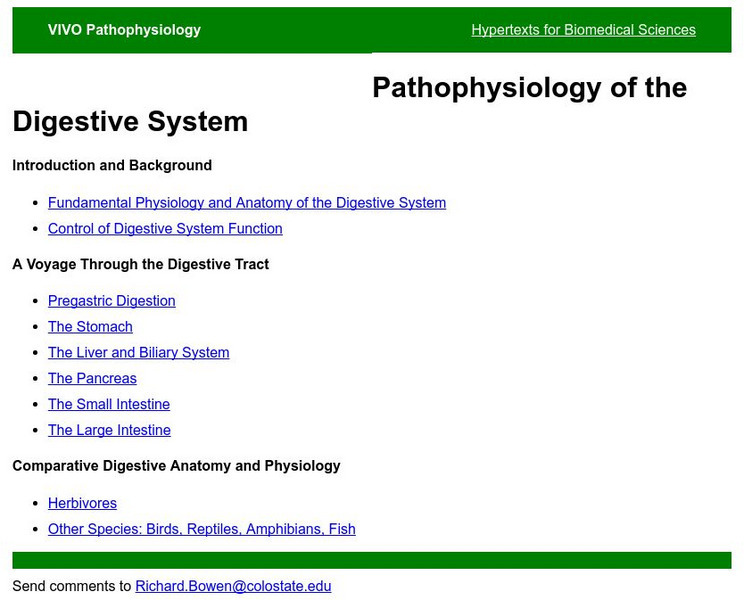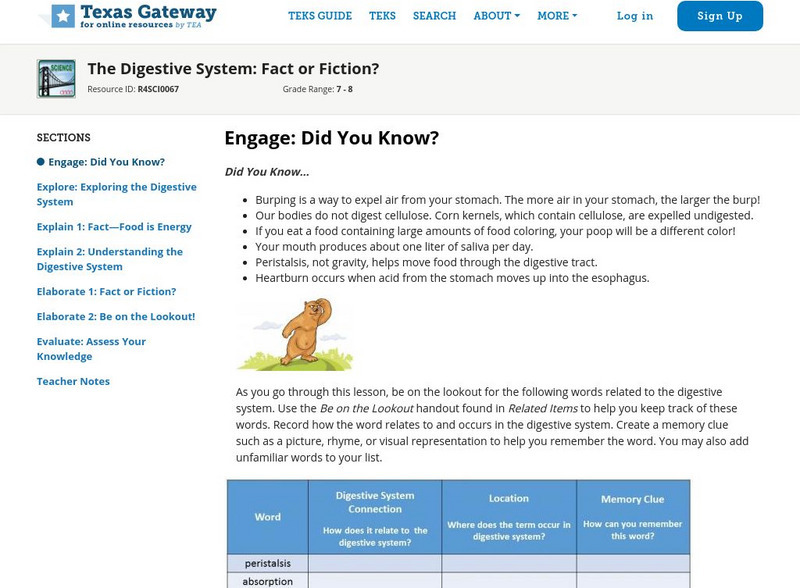Hi, what do you want to do?
Curated OER
Hazard Mitigation: Bioterrorism
Students discuss different ways to spread infectious diseases. In this bioterrorism activity, students model the rate of smoke emission using CalRoad software. They analyze the effects of airborne release of...
Curated OER
Halloween: Arachnids
Students participate in class discussion about the movie Arachnophobia. In this biology lesson plan, students find articles and photos of a species that interest them. They share it with their group.
Curated OER
Energy Balance
Students explore energy. In this health and nutrition lesson, students brainstorm a list of healthy foods that provide energy, and identify physical activities that burn energy. Students complete a good nutrition worksheet.
Curated OER
Birds
In this biology worksheet, learners complete a crossword puzzle with 34 questions on bird classification and characteristics.
Curated OER
Seed Dispersal By Animals
In this seed dispersal by animals worksheet, students read for information and complete comprehension activities. In this short answer worksheet, students answer nine questions.
Curated OER
Properties of Matter (Biomaterial Through Nanotechnology)
Students investigate friction between different surfaces. In this physics lesson, students research biomaterials that can reduce friction. They calculate efficiency using a mathematical formula.
Curated OER
Eating a Low-fat Nutritious Lunch
Students describe healthy and delicious lunch foods to replace junk foods. They make and eat lunch foods.
Curated OER
Nutrition Quiz #1
In this nutrition quiz worksheet, students complete an on-line quiz, clicking on questions and matching answers, scoring 1 point for each correct answer. A printed version is available.
Curated OER
Nutrition Quiz #2
In this nutrition quiz worksheet, students complete an on-line game, clicking on questions and matching answer cards and scoring 1 point per correct answer. Printable version available also.
Curated OER
Dietary Minerals Quiz
In this dietary minerals quiz worksheet, students complete an on-line game, clicking on questions and matching answer cards and scoring 1 point per correct answer. Printable version available also.
Curated OER
Quiz on Vitamins #2
In this vitamins quiz worksheet, students complete an on-line quiz, clicking on questions and matching answers, scoring 1 point for each correct answer. A printed version is available.
Curated OER
Grizzly Hibernation
Students explain why and how grizzlies hibernate. They make a den using cardboard boxes. They write a story told from a new-born grizzly.
Curated OER
Alcohol and Pregnancy Don't Mix!
Seventh graders learn about John Kellerman, a youngster who was born with Fetal Alcohol Syndrome. They learn how alcohol and pregnancy doesn't mix.
Curated OER
Living Environment
In this environmental activity students complete a series of multiple choice and short answer questions on animal populations, cell structure and chromosomes.
Curated OER
Homeostasis
In this homeostasis worksheet, students answer twelve questions about positive and negative feedback loops and how they effect homeostasis.
Curated OER
Graphing Dairy Production Statistics
Students collect data about dairy production. In this geometry lesson, students formulate and model problem solving. They collect data and plot it on a graph.
Curated OER
Making Blood!
students research blood's components, and use their math skills to recreate a model of whole blood using commonly found food items.
Curated OER
Stress, Coping and Health
In this psychology worksheet, students complete 5 short answer questions on possible reasons for stress and how to cope with it.
Curated OER
Science Test-Grade 5
In this grade 5 science test worksheet, 5th graders complete a 30 question multiple choice quiz covering a variety of grade 5 concepts.
OpenStax
Open Stax: Anatomy & Physiology: Overview of the Digestive System
Students learn about the structure and function of the human digestive system, the accessory digestive organs, the tissue layers of the alimentary canal, the contributions of the enteric and autonomic nervous systems to digestive system...
Colorado State University
Colorado State: Pathophysiology of the Digestive System
A site on the disorders of the digestive system and on the similarities and differences between the digestion of birds and ruminants.
BSCS Science Learning
Bscs Science Learning: A Look Inside the Digestive System
In this interactive, students look at actual endoscopic images from a healthy person and from a patient, the patient presented in the unit. They take a tour of the digestive system stopping at different points to look at images.
Texas Education Agency
Texas Gateway: The Digestive System, Fact or Fiction?
In this lesson students read fun, gross, or interesting facts about the digestive system and they are introduced to several unfamiliar words and encouraged to "be on the lookout" for those words during the lesson.
National Cancer Institute at the National Institutes of Health
Seer Training Modules: Introduction to the Digestive System
Self-guided learning activity where students learn about the structure and function of the human digestive system. There is a short quiz at the end of the lesson to check for understanding.


























